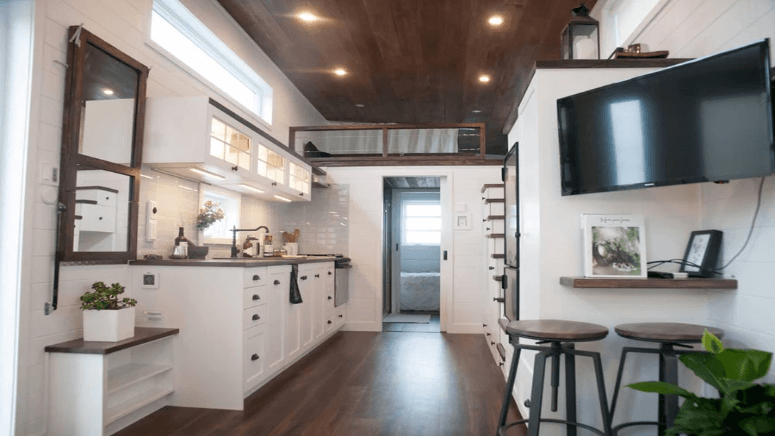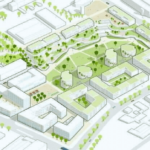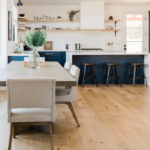The process of creating a 3D-rendered floor plan in relation to tiny home development entails the use of tools that help execute space very well. This tool helps generate ideas and layouts and also helps make improvements to designs that may be detrimental to the use of available space so that the design trial is not the only time the designer gets to test the design on a small non-functional model before construction.
It is now beyond debate that 3D rendering has drastically changed architects’ and designers’ approaches to preparing floor plans. It has emerged as a crucial part of the formulation process due to its ability to generate accurate and comprehensive renderings of spaces. With the new trends of constructing micro houses as tiny houses, 3D rendering is even more useful in designing and constructing these small houses.
This guide will teach you how to create a 3D rendered floor plan for your tiny house using different software and techniques. Whether you are a beginner or an architect, these tips will help you make your vision come true.
When did you last hear a property buyer say, ‘Less is more?’ This is becoming increasingly popular due to the desire of most homeowners to live a simple life with efficiency and low power consumption.
The tiny house movement has prompted the residents of big cities to adopt small, sustainable, cheap, and creative housing solutions. Inevitably, the real estate and AEC industries can expect more specific tiny home construction and promotion approaches.
At CAD Drafting Service Company, we utilize interior and exterior 3D renderings, virtual reality, interactive floor plans, and detailed construction drawings, specifically tailored to small house-building projects.
Tiny Home Development, Designs, and Floor Plans
Tiny homes are more than just small house designs; they are one of the most revolutionary tendencies in real estate that redefine the concepts of size, construction, and purpose. If you’re a home builder, architect, designer, subcontractor, stakeholder, or real estate developer involved in a tiny home project, you may be wondering:
- What exactly are tiny homes, and how do they differ from modern single-family homes in the US?
- Why are property buyers increasingly drawn to them?
- Which interior construction drawings for minimalist homes are ideal for tiny home projects?
- What crucial details in tiny home floor plans can assist builders and captivate buyers?
The unique constraints of space, cost, sustainability, and minimalist style present specific challenges for architects and real estate marketers:
Conventional, tiny homes measure from 100 to 400 square feet, making them much smaller than condos, apartments or ADUs. This is a major challenge in architects and designers’ work to make mobility functional in design without having to sacrifice form or cost.
Thus, for solving utilitarian problems of space usage, it is necessary to attract qualified personnel for the architectural drawings of tiny homes in the United States. These drawings are applied to guarantee correct measurements, elaborate staking and, superior quality workmanship.
Effective use of relevant real estate 3D rendering for the tiny house can help the marketing personnel provide details of the spot and thus appeal to the right clientele to make the project successful.
Benefits of 3D Rendering in Tiny Home Development
Thus, it can be beneficial to examine 3D rendering in the creation of tiny homes in detail. Find out how this evolution of technology helps in the design and development process, increases visualization and construction. Find out why 3D rendering is revolutionary for small houses construction companies that need to design exceptional living spaces.
Improved Design Process
As a result of using 3D rendering, architects and designers have a tool that makes it easy to generate realistic life images of the tiny homes, their interiors and exteriors. It enhances the working of its users since it enables them to alter a design easily, try out various options in terms of material and color, and adjust the design prior to construction.
Enhanced Visualization for Buyers
For the target consumers, 3D rendering provides a closer look into what their future home will be like. They can use it to check and monitor how the various components of their design will blend and make proper decisions concerning the finishes and space usage. Such visualization can go a long way in increasing the level of interest of the buyers and thus help to close deals at a faster pace.
Streamlined Construction Process
3D rendering also has the advantage of being efficient in the construction of projects. This way, builders can learn of any problems that may be looming ahead and this will help them avoid mistakes hence the need for a perfectionist’s touch.
They also facilitate good communication between architects and designers and between them and the contractors, which helps minimize cases of misunderstanding and the final product not meeting the intended design.
It Explores a Better Way to Visualize a Small Space
- Tiny home designers use interior design drawings and 3D floor plan layouts, to carefully scrutinize every part of the tiny home.
- Precise ideas of small home interiors entail very minute details that enable designers to exhaust the available space fully to its maximum ability.
- This consists of many positions and creates extra adaptable and convertible, as well as brilliant work on the fixtures, storage space, and home furniture of the house.
Ideal for High-Level Customization
- Custom 3D rendering solutions for pre-construction presentations cater to the unique needs and preferences of tiny home buyers.
- Similar to the open floor plans of ranch-style homes, tiny home floor plans and their architectural visualizations are tailored to reflect the client’s aesthetic and lifestyle preferences.
Streamlines Construction Workflow
- Consequently, most construction teams prioritize 3D rendering in their projects.
- Detailed 3D tiny home floor plans and construction drawings ensure accuracy, efficiency, cost management, and crew coordination—critical elements in tiny house development.
Allows Experimentation with Architecture & Interiors
- Living area being a major constraint, even small house plans present significant possibilities to play with different concepts of home designing.
- Introducing the opportunities of the manipulation of interaction with an addition to changes in color, texture, patterns, and lighting prove the applicability of the interactive 3D floor plans for small housing from the viewpoint of improvised aesthetics of tiny house consistency.
Reduces Design Problems of Compartment Living
3D visualization and rendering are major in improving the efficiency of the entire designing process, and these are major assets for tiny house development that are devoid of the two main paramount hurdles.
Showcases Sustainable Elements
- Contemporary micro houses display environmentally friendly systems in all parts of the tiny houses and internal arrangement.
- Solar energy, roofs, gardens, and even water harvesting are some of the basics that constitute the green 3D maps of the tiny home layouts.
Enhances Client Feedback with Realistic Views
- The cooperation with a reliable 3D rendering firm enhances coordination in the construction of buildings and structures.
- Real-time and photorealistic rendering is time-saving and assists the managing teams in gaining an insight on the client’s perception and allows for comments.
Important Tiny House Plan Considerations
- Foundation Plan Drawings: Where as if your tiny home is not mobile, which most of them are not, then you have a lot more freedom when it come to your home’s location.
- Open Floor Plans: One or two-story houses become logical in compact houses, so tiny home projects are ideal for bachelors and couples who require some corner for solitude and tranquillity.
- Number of Occupants: If there is a proposal to design homes for miniature families, one should increase the number of beds. Some of the considerations that have to be taken into account during the preparation of key documents for constructing small homes depend on the number of people.
- Exterior Living Spaces: Spaces like rooftop patios or decks are largely applied to extend the room area for tiny house owners. They are cheap to maintain and also flexibility in accommodating the weather changes.
Also read: Foundation Plan Drawing: What It Is and Why You Need It in 2024
Conclusion
This is a highly attractive segment that is gradually experiencing increased interest from buyers and acquiring the status of a real estate movement based on a frugal and free life. With the continually trending towards the construction of small houses, the AEC professionals from across the world are looking for quality tiny house renderings in the USA for the exterior as well as the interior architectural designs.
As for services, CAD Drafting company Copl is happy to present our team focused on architectural visualization with 3D rendering, architectural walkthroughs, and product modelling. We support homebuilders, developers, and real estate companies with a range of services, including:
- Architectural and interior construction drawings
- Building Information Modeling
- Millwork shop drawings
- Tile/stone shop drawings and metal shop drawings
- CAD Conversions
For architectural design, we use 3D architectural rendering and construction documentation tools including Revit,Chief Architect and AutoCAD for construction documentation and SolidWorks for millwork shop drawings and for rendering we use 3dsMax, Chaos Corona, and V-ray. If you need an outsourcing service for tiny house floor plans and 3D walkthroughs, then you are in the right place. Let’s collaborate!




